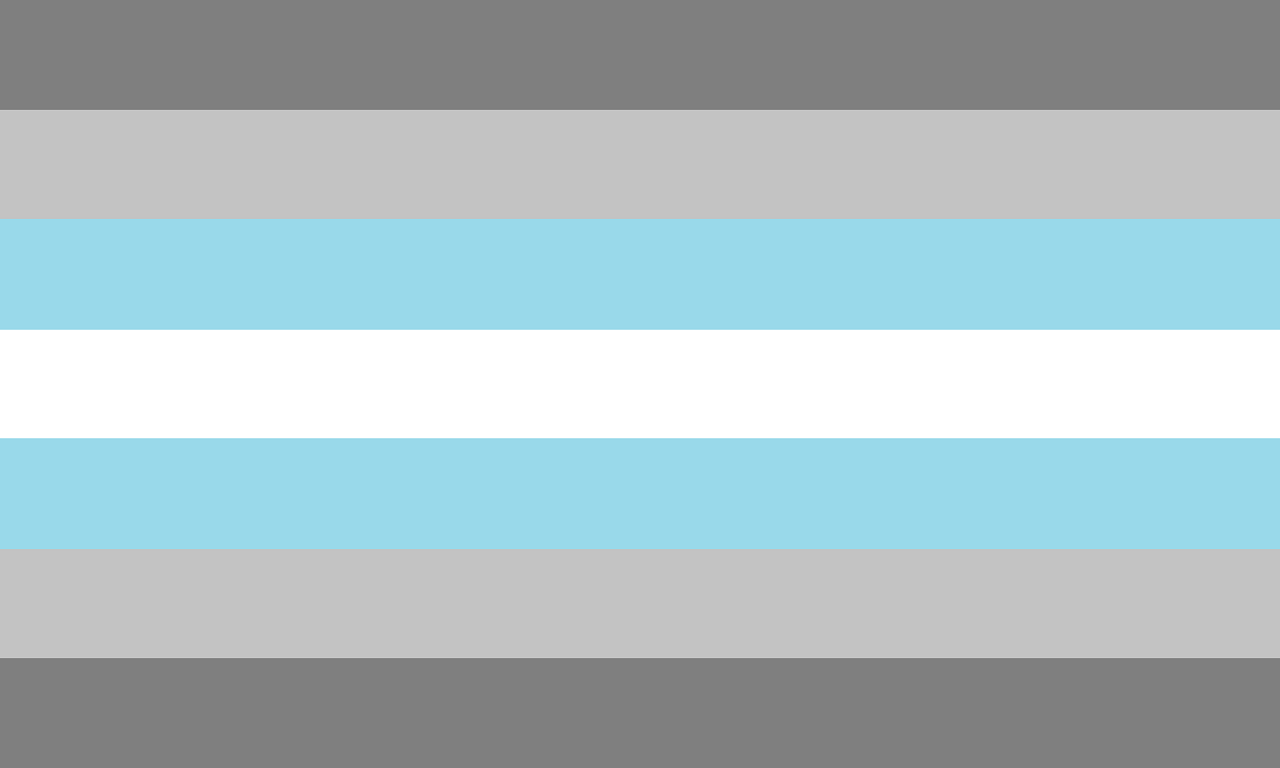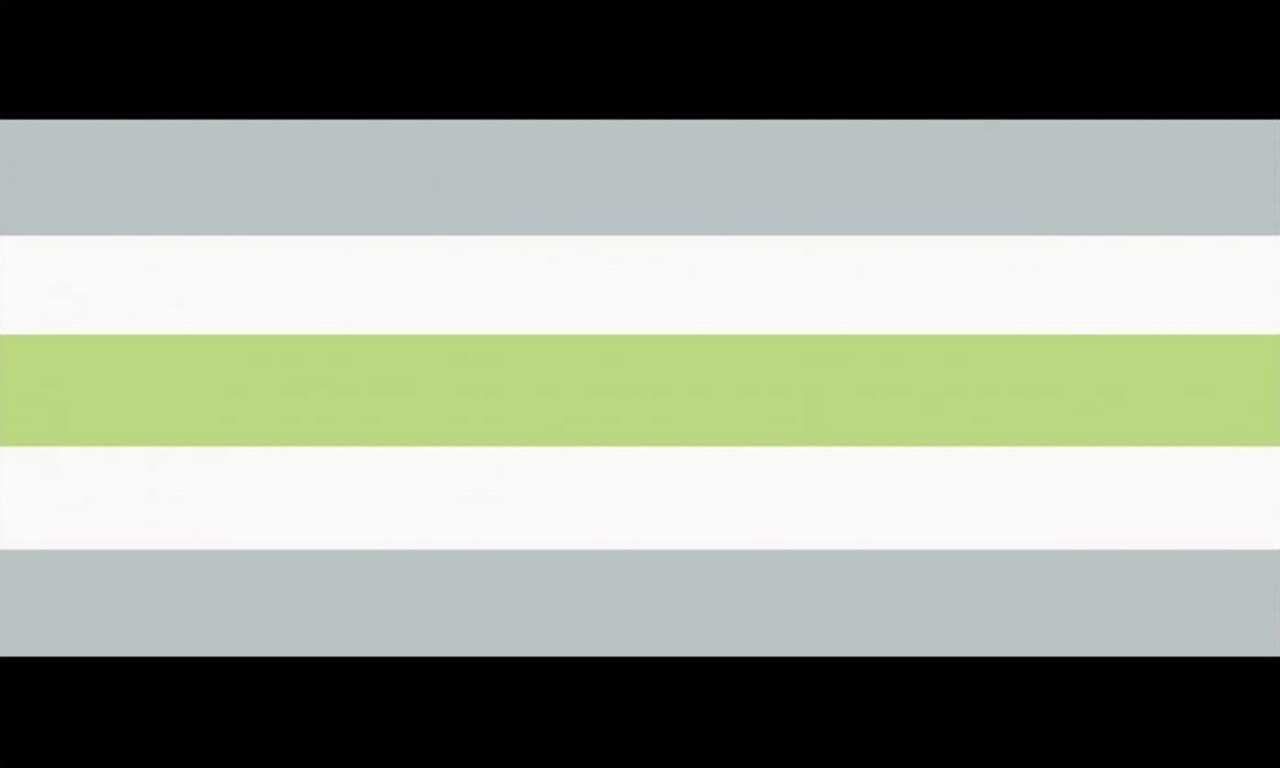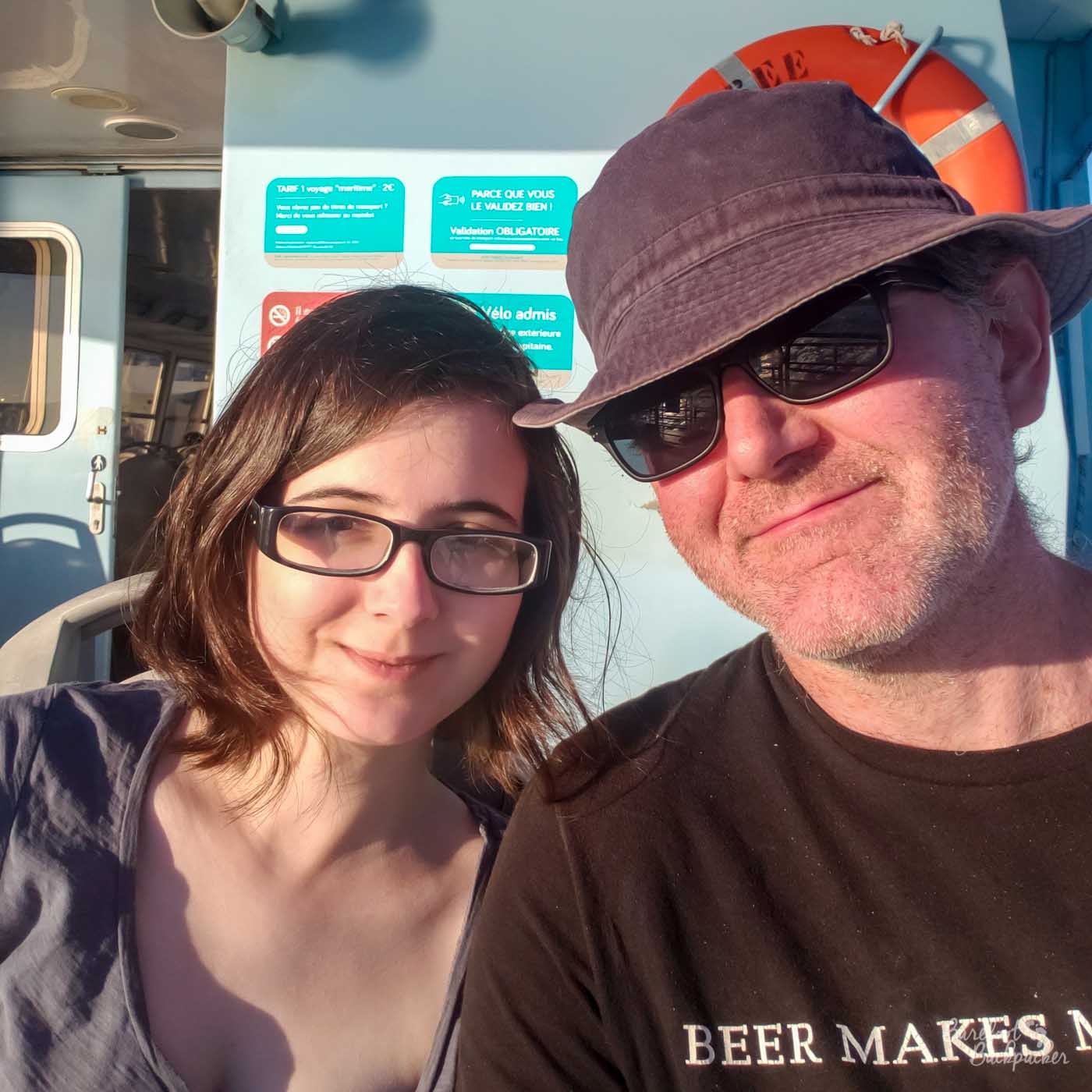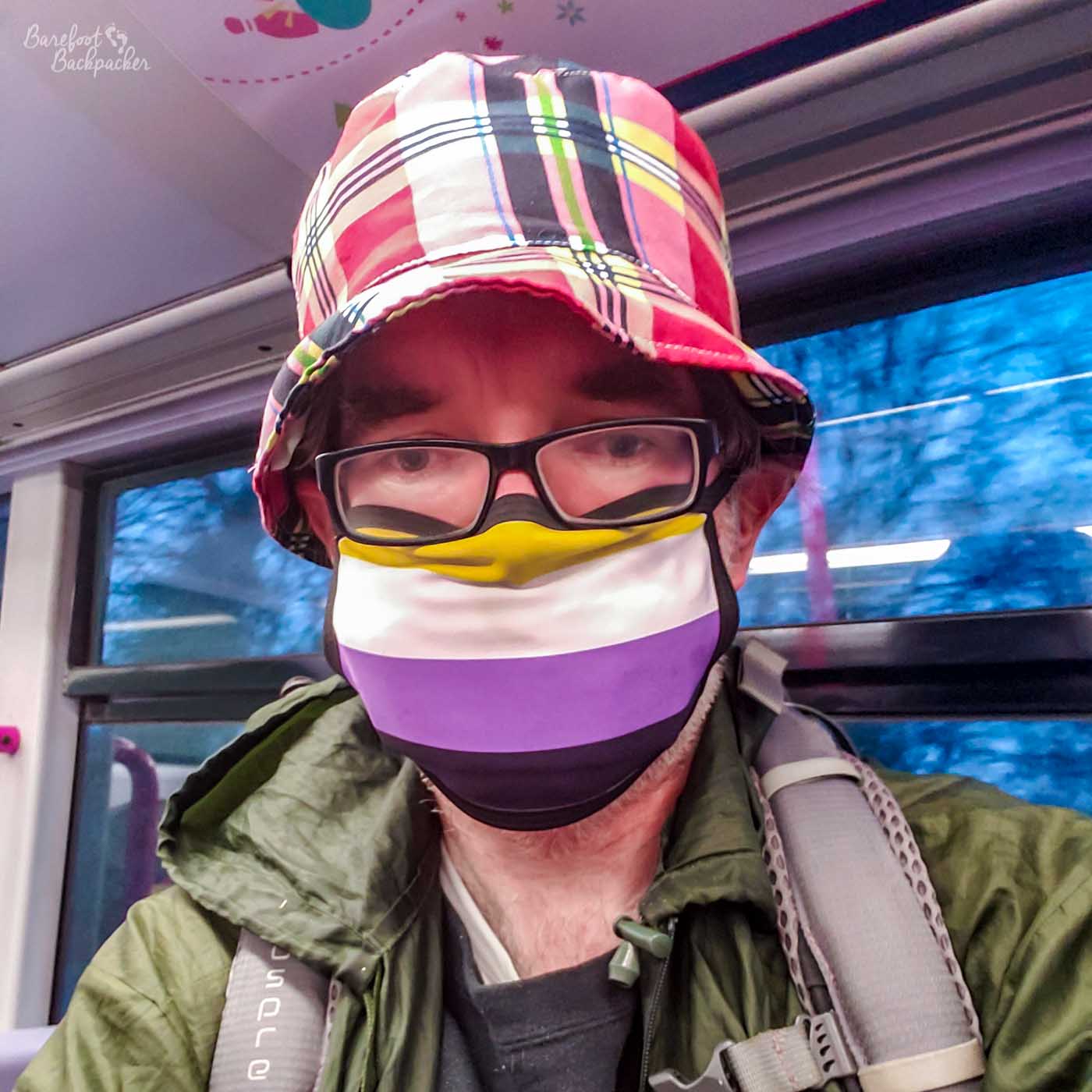The concept of non-binary identity crept up on me unawares. I’d written my rant about toxic masculinity a couple of years earlier, but at the time I didn’t really see it as anything other than an explanation as to why I never fitted in with other men and the male lifestyle. Indeed I assumed it was my asexuality that was at play with regard to a lot of it. I was clearly male, just ‘not very good at it’, at least by the standards of other men.

Pretending to look smart on my fourth-to-last day in my old job.
Turns out, being open to fundamental change in one part of your identity leaves you wide open to accepting fundamental change in other parts of your identity. When I wrote that post, I didn’t even really know about gender flexibility. It’s amazing what a global pandemic can do to a person.
But first, let’s set the scene.
What is non-binary?
You’ve all heard of the Gender Binary, that people are either male or female? Well, Non-binary is, in its simplest form, the identity of people who are neither male nor female.
You might be wondering: but how can this be? And the simplest answer, albeit not very nuanced at all, is: if Transgender means going from one to the other, Non-Binary means stopping halfway.
To be more precise, someone who is Non-Binary (or Enby) knows that the gender they are does not match the body that they’re in, like people who are Trans, but equally that their gender doesn’t match the opposite type of body either. They would feel the same level of body dysmorphia regardless of whether they were in a male body or a female body. While included in the Rainbow Acronym under T for Trans, the actual relationship between Trans and Non-Binary is not that simple, and I talk about that elsewhere. In addition, there’s a whole series of subcategories that specify what flavour of non-binary a person is. In a sense, non-binary is a spectrum that covers everything from ‘aligns closely with birth gender but with strong reservations’ all the way to ‘I have no gender’.
What are the different types of non-binary identity
There are many, many, different types and definitions of non-binary identity, and all are subtly different, although there are three main subtypes: demigender, agender, and ‘other gender’. Confusingly, they all overlap. I give an overview of this, and related identities, when I talk about Pride Flags.
Demigender

Demiboy Pride Flag. I tend not to use it much, for … self-evident reasons.
As the name implies, these are people who only feel ‘half’-aligned to any particular gender. Normally, one of these would be the gender they were born as, so as someone inhabiting a body with male features, I would describe myself as ‘demiboy’ (that’s the most common term, though any synonym for ‘male’ can be used – I’ve seen ‘demiguy’ used, and I guess you could say ‘demibloke’ or ‘demidude’. I find ‘demiboy’ sounds a bit childish, or akin to a cut-price superhero, but I’ve not yet found a better phrase). The female equivalent is usually defined as ‘demigirl’, with the same baggage.
The other ‘half’ of their gender identity could be literally any other gender. It’s commonly seen as a non-binary identity because most often that other ‘gender’ is some form of ‘not applicable’, as in, someone would identity as partly male and partly as having no real gender identity at all. It’s definitely possible to be ‘bigender’, as in, to be both demiboy and demigirl at the same time, although whether this counts as non-binary or not is probably up to the person in question. A related term here is ‘genderfluid’, where someone flips between genders in their everyday life. While usually seen as feeling ‘sometimes male and sometimes female’, there’s no reason why someone doesn’t flip between a ‘binary’ gender and an alternative gender or even no gender at all.
Agender

Agender Pride Flag. I have likened it to a broken television set before now.
Agender, and related terms like ‘genderless’ and ‘neutrois’, are where someone feels they don’t have a gender identity. Either they don’t feel attached to any gender, or the concept of gender itself has no meaning for them. What you might often hear them say is ‘I am a person’, rather than ‘I am male/demiboy/genderfluid’ etc.
For demigender and genderfluid people, they might feel sometimes closely aligned with the concepts of their birth gender, and at other times reject the idea of gender and what it stands for. Me, basically.
Other Gender
Some people see their gender identity differently. They still view themselves as having a gender, of even at times feeing strongly aligned to the concept of gender, but the gender they’re aligned to is itself neither ‘male’ nor ‘female’.
This is commonly seen in non-western cultures, such as the ‘māhū’ in the Maoli and Maohi from Polynesia, the hijra of South Asia, and the many gender identities that fall under the term ‘two spirit’ in Native American society.
It can also be very much an individual concept – someone can go ‘I know I feel I’m something, and there’s no current definition as to what I feel I am, so let me define it for myself’. Again, this can be seen additionally as one part of a genderfluid identity.
How does someone non-binary present themselves? What does enby look like?
The short answer is: However and whatever they like.
The problem with gender identity is, certainly in the environment I grew up in, there’s a whole raft of associations that are assumed to come along with the concept of gender. These include everything from assigned gender roles, to gender-specific behaviours, to clothing that’s usually seen as being only wearable by one gender.
The beauty of being non-binary is these gender assumptions simply no longer apply. If I’m not a man, even if I believed in gender-specific concepts, they don’t apply to me. Where the vibe falls down a bit is because non-binary identities aren’t really in the public consciousness yet; a stranger walking down the street will still try to ‘clock’ someone as ‘male’ or ‘female’, and get easily confused if someone doesn’t fit their box definitions. And confused people tend to get angry, and defensive or critical.

Channelling my inner watermelon. Pic taken in Lyon by Laura Lundahl.
In addition, there’s a mantra amongst enbies: We Don’t Owe You Androgyny. This is because people’s definitions/expectations are that if you’re actively trying to be neither gender, this needs to be reflected in the way you look. Since most clothes are gendered by inference, if not by design, this leads to a very narrow view of androgyny, consisting mainly of suits, or something more akin to cyberpunk with ‘uniform’ clothing of neutral colours and shapes, and a beyond-natural make-up look. Numanoids, basically. Or a kind of Marilyn Manson vibe, but without the squick.
I can only think of one gendered item of clothing, and even then it’s not so much the bra is a *gendered* item, more a case of, because larger breasts are seen as being something seen on female-designed bodies, wearing one is a very pointed exercise, and you wouldn’t really do it if you didn’t have breasts unless you wanted to make people think you had.

It’s a fake bra, but yes, I think I look kinda cool with breasts. YMMV.
I’ll talk more about non-binary and gendered style in another post, but just have a think of all the ways men and women present themselves, in terms of clothing, make-up, hairstyles, hair and clothing colours, accessories, etc, and ponder how many of them are associated with only one of the genders. If you’re neither male nor female, those rules no longer apply. In addition, many people equate non-binary with specifically agender and assume the only valid non-binary look is some kind of androgyny. I’d like to think I’m far more colourful.
How did I find out I was non-binary?
When I revealed to some people that I was starting to associate with the term non-binary, someone pointed out they’d had suspicions from when I wrote the blog about toxic masculinity, but hadn’t felt it their place to point the idea out to me, instead preferring to wait until I figured it out for myself. Evidently therefore, just like with my asexuality and aromanticism, the clues were always there, in the background, they were just harder to see.
The direct way, therefore, was hanging around a Discord Server with a bunch of asexuals, and slowly realising I was relating to some of the things they were talking about when they were describing their journeys through Gender exploration. Some of the rejection for masculinity I was experiencing matched experiences they were having, but whereas I just put it down to ‘being bad at being cishet’, they were actively vibing with the concept of, well, not being cishet in the first place.
What was interesting is that, over time, the more I looked into non-binary definitions and concepts, the more other walls came down. I realised that things I was assigning to asexuality would be better described as non-binary, and even specifically as agender.
What helped that is one of my close friends online coming at the same conclusion from the opposite direction – they’d already reached agender having by-passed demigirl, and it was useful to compare and contrast notes with them about how we both felt.

Me and my friend Lix. Two different flavours of demisexual non-binary.
I’d still call myself demiboy, as sometimes I definitely feel and want to project as more masc, but very definitely I also don’t see gender as being that important to me, and most of the time try to avoid it. Sometimes this has me now presenting as much more femme than I’d ever expect to, but I talk about that in another post about the lack of representation for male-bodied non-binary people.
How did it feel to realise I was non-binary?
I was initially wary of the term. When I first came across the concept of asexuality, it felt comfortable straight from the start because it exactly matched my feelings and it was really good to finally have a word that described my feelings precisely. I didn’t have the same pull to the concept of non-binary. Partly I had a kind of … it felt like I was appropriating the term, that I wasn’t ‘really’ non-binary and that people who felt it deeply in their core would object to me co-opting the term to describe what I was.
However, the more I looked into it, the more it felt that I was ‘probably on the edge’, and the only way to truly find out was to try the word out, see if it fitted, and read about how other people decided the term suited them. Demiboy was a perfect start since it was almost a definition of my toxic masculinity post, it was just a case for me of working out if demiboy was non-binary ‘enough’.
There was a weird pivotal moment in my journey. It was only a very small thing, but I’d say it was the start of my journey into accepting my position on the non-binary spectrum. It was a face-mask. All this soul-searching was being done in the height of the global Covid pandemic, and obviously face-masks were the latest must-have accessory. If I was going to have to wear one, I wanted one that was individual and reflected who I was. An online shop sold them in the styles of a number of pride flags so I obviously got the asexual one, but I hesitated for a while because I wondered about getting the non-binary one as well. Would I be a fraud if I wore it? I decided to buy it anyway, because you never know, and I had other masks so didn’t have to wear it if I didn’t like it.

But so few people recognise the colours of the mask!
As soon as I got it, as soon as I wore it for the first time, I just … knew. You know? I knew it was right, I knew I belonged. And once I got over that feeling, once I realised I could accept myself displaying literal ‘non-binary pride’, I felt much more comfortable with the term. And not just because it has a better flag.